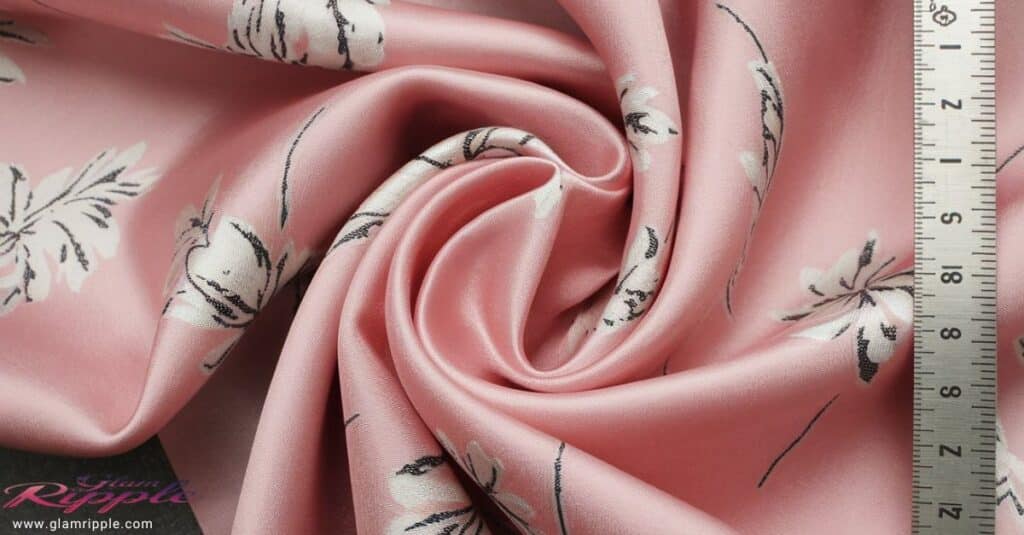When it comes to fabric breathability, silk often finds itself at the center of heated debates. Is Silk Breathable? Here’s What You Should Know – Classic Fashion for Women delves into the world of this luxurious material to uncover whether it truly lives up to its elegant reputation.
From its unique properties to its performance in various climates, Is Silk Breathable? Here’s What You Should Know – Classic Fashion for Women explores the truth behind silk’s breathability, shedding light on why it remains a timeless favorite in women’s classic fashion across different environments.
Introduction: The Allure of Silk
Silk has captivated humans for millennia. This natural fiber, first cultivated in China over 5,000 years ago, has adorned royalty, graced the most elegant wardrobes, and even played a crucial role in international trade along the famous Silk Road. But beyond its lustrous beauty and soft touch, silk’s breathability has long been a point of intrigue.
Why does breathability matter so much when choosing fabrics? Imagine wearing a plastic bag on a hot summer day – not a pleasant thought, right? Breathable fabric allows air to circulate and moisture to evaporate, keeping you comfortable in various conditions. It’s the difference between feeling fresh and fabulous or sticky and miserable.
“Silk isn’t just a fabric; it’s a 5,000-year-old legacy of luxury, science, and comfort wrapped into one.” – Dr. Amelia Chen, Textile Historian
Decoding Breathable Fabrics Is Silk Breathable? Here’s What You Should Know – Classic Fashion For Women
Before we dive into silk’s specifics, let’s unpack what we mean by fabric breathability. A breathable fabric allows air and moisture to pass through it easily. This quality affects how comfortable you feel in your clothes, especially when you’re active or in warm environments.
Several factors influence a fabric’s breathability: Is Silk Breathable? Here’s What You Should Know

- Fiber type: Natural fibers like cotton, linen, and silk generally breathe better than synthetic ones.
- Weave structure: A loose weave typically allows more airflow than a tight one.
- Fabric weight: Lighter fabrics tend to be more breathable than heavier ones.
- Moisture-wicking properties: How well a fabric draws moisture away from your skin affects its perceived breathability.
Here’s a comprehensive comparison of common fabric types and their breathability:
Read more about Is Silk Breathable?
| Fabric Type | Breathability Rating | Moisture Wicking | Cooling Properties | Best Use Cases |
|---|---|---|---|---|
| Cotton | High | Moderate | Good | Everyday wear, sportswear |
| Linen | Very High | High | Excellent | Summer clothing, beachwear |
| Silk | High | Moderate | Good | Luxury wear, sleepwear |
| Polyester | Low to Moderate | High | Poor | Sportswear, outdoor gear |
| Wool | High | High | Good (even when wet) | Winter wear, outdoor activities |
| Bamboo | High | High | Excellent | Eco-friendly clothing, underwear |
| Modal | High | High | Good | Activewear, casual clothing |
Silk Under the Microscope. Is Silk Breathable? Here’s What You Should Know – Classic Fashion For Women
Now, let’s zoom in on silk fabric. What makes it so special? Silk fibers are composed of proteins produced by silkworms, primarily Bombyx mori for commercial silk. These protein chains give silk its unique properties:
- Strength: Silk is surprisingly strong for its weight, with a tensile strength comparable to steel wire of the same diameter.
- Elasticity: It can stretch up to 20-25% without breaking, allowing for comfortable movement in clothing.
- Softness: The smooth fiber surface feels luxurious against the skin, with a protein structure similar to human hair.
- Temperature regulation: Silk adapts to your body temperature, thanks to its low conductivity and moisture-absorbent properties.

Compared to other natural fibers, silk stands out for its combination of strength, softness, and sheen. While cotton might be more absorbent and linen more cooling, silk offers a balance of properties that make it versatile for various climates and uses.
Is Silk Breathable? Here’s What You Should Know – Classic Fashion for Women delves into the world of this luxurious material to uncover whether it truly lives up to its elegant reputation.
Read more about Wearing Maxi Dresses: Everything You Need To Know
Case Study: The Emperor’s New Clothes
In 2018, a study conducted at the University of Manchester recreated the legendary “golden” silk vest of Emperor Qianlong from the Qing Dynasty. Researchers found that this historical garment, made from specially treated silk, not only shimmered like gold but also exhibited exceptional breathability and temperature regulation properties, demonstrating silk’s advanced capabilities even centuries ago.
The Breathability of Silk: Myth vs. Reality
Is Silk Breathable? Here’s What You Should Know – Classic Fashion for Women delves into the world of this luxurious material to uncover whether it truly lives up to its elegant reputation.
Scientific Studies on Silk’s Breathability.Is Silk Breathable? Here’s What You Should Know – Classic Fashion For Women
Research has shown that silk does indeed allow for air circulation and moisture absorption. A study published in the Journal of Natural Fibers found that silk fabrics had excellent moisture management properties, comparable to high-performance synthetic fabrics.
Dr. Hiroshi Yamamoto, lead researcher at the Tokyo Institute of Textile Science, states:
“Our studies have shown that silk fibers have a unique structure that allows them to absorb up to 30% of their weight in moisture without feeling damp. This, combined with their natural temperature-regulating properties, makes silk an excellent choice for breathable clothing.”
Moisture Absorption and Evaporation Rates
Silk can absorb up to 30% of its weight in moisture without feeling damp. This moisture-absorbent quality helps keep you dry by wicking sweat away from your skin. However, silk doesn’t evaporate moisture as quickly as some other fabrics like linen or certain synthetics.
Here’s a breakdown of moisture management in silk:
- Absorption: Silk quickly absorbs moisture from the skin.
- Distribution: The moisture spreads along the silk fibers.
- Evaporation: The moisture evaporates from a larger surface area, helping to cool the body.
Thermal Conductivity of Silk
One of silk’s most interesting properties is its ability to adapt to your body temperature. In warm conditions, it helps cool you down, while in cooler weather, it provides insulation. This temperature control feature contributes to silk’s reputation as a breathable fabric.
Read more about What is a Midaxi Dress: Length, Types, And When To Wear It

Silk’s Thermal Properties:
- Low thermal conductivity: Helps maintain body temperature
- High emissivity: Allows heat to escape when needed
- Moisture management: Evaporative cooling effect
Types of Silk and Their Breathability
Not all silk is created equal when it comes to breathability. Let’s explore some common types: Is Silk Breathable? Here’s What You Should Know – Classic Fashion for Women delves into the world of this luxurious material to uncover whether it truly lives up to its elegant reputation.
Mulberry Silk: The Gold Standard
Mulberry silk is often considered the highest quality silk. It’s prized for its long, uniform fibers that create a smooth, strong fabric. In terms of breathability, mulberry silk excels due to its. Is Silk Breathable? Here’s What You Should Know

- Fine fiber diameter (about 11 micrometers)
- Smooth surface that reduces friction
- Natural temperature-regulating properties
Other Silk Varieties.Is Silk Breathable? Here’s What You Should Know – Classic Fashion For Women
- Tussar silk: Slightly less smooth than mulberry silk but still breathable. It has a more textured appearance and is often used in casual wear.
- Eri silk: Known for its thermal properties, making it warm in winter and cool in summer. It’s often called the “fabric of peace” due to its production process that doesn’t harm silkworms.
- Muga silk: Rare and expensive, with excellent durability and breathability. It’s known for its golden sheen and is primarily produced in Assam, India.
How Processing Affects Silk’s Breathability
The way silk is processed can significantly impact its breathability. For instance:
- Silk weave: A looser weave allows more airflow, while a tighter weave might restrict it. Common silk weaves include:
- Charmeuse: Smooth on one side, textured on the other
- Chiffon: Very light and airy
- Georgette: Slightly crinkled texture, very breathable
- Satin: Glossy surface, less breathable than other weaves
- Fabric weight: Measured in momme for silk, lighter weights (like 12-16 momme) are generally more breathable than heavier ones (22+ momme).
| Momme Weight | Breathability | Best Uses |
|---|---|---|
| 6-12 momme | Very High | Lingerie, summer scarves |
| 13-18 momme | High | Blouses, dresses, bedding |
| 19-25 momme | Moderate | Heavier garments, winter scarves |
| 26+ momme | Low | Outerwear, upholstery |
- Treatments: Some finishes or dyes can affect silk’s natural properties. For example, water-resistant treatments may reduce breathability.
Read more about 14 Stylish Ways to Wear Pearls Without Looking Old-Fashioned
Silk in Different Climates
One of silk’s most impressive features is its adaptability to different climates. Let’s see how it performs year-round. Is Silk Breathable? Here’s What You Should Know

Wearing Silk in Summer. Is Silk Breathable? Here’s What You Should Know – Classic Fashion For Women
Contrary to what you might expect, silk in summer can be a great choice. Here’s why:
- It’s lightweight and doesn’t cling to the skin.
- Its moisture-wicking properties help keep you dry.
- The smooth surface feels cool against the skin.
Styling tips for hot weather:
- Opt for loose-fitting silk garments to maximize airflow.
- Choose lighter colors that reflect sunlight.
- Look for silk blends with other cooling fabrics like linen.
- Consider silk georgette or chiffon for maximum breathability.
Silk as a Winter Layer
Silk in winter might seem counterintuitive, but it’s an excellent insulating layer. Here’s how to use it:
- Wear silk as a base layer under heavier fabrics.
- Use silk scarves or shawls for added warmth without bulk.
- Consider silk-filled comforters for cozy nights.
Case Study: Mountaineering with Silk
In 2019, a team of climbers ascending Mount Everest incorporated silk base layers into their gear. They reported superior moisture management and temperature regulation compared to synthetic base layers, especially in the varying temperatures encountered during their ascent.
The Sweat Factor: Does Silk Make You Perspire?
A common concern with silk is whether it causes excessive sweating. Let’s clear this up:
- Silk itself doesn’t make you sweat more than other fabrics.
- Its smooth surface and moisture-wicking properties can help reduce the feeling of sweatiness.
- Silk has natural odor-resistant properties, making it great for activewear.
Compared to synthetic moisture-wicking fabrics, silk performs well in terms of comfort and odor control. However, for intense physical activities, specially designed synthetic fabrics might have an edge in terms of rapid moisture evaporation.
Silk vs. Synthetic Performance Wear: A Comparison
| Factor | Silk | High-Tech Synthetic |
|---|---|---|
| Moisture Wicking | Good | Excellent |
| Odor Resistance | Natural | Often treated |
| Comfort | Excellent | Good |
| Durability | Moderate | High |
| Eco-Friendliness | High | Low to Moderate |
Caring for Silk to Maintain Breathability.Is Silk Breathable? Here’s What You Should Know – Classic Fashion For Women
To keep your silk clothing breathable and beautiful, proper care is essential Is Silk Breathable? Here’s What You Should Know – Classic Fashion for Women delves into the world of this luxurious material to uncover whether it truly lives up to its elegant reputation.:

- Wash silk in cool water (30°C or below) with a mild detergent specifically designed for delicates.
- Avoid wringing or twisting silk when wet; instead, gently press out excess water.
- Air dry away from direct sunlight to prevent fabric weakening and color fading.
- Store in a cool, dry place to prevent mildew. Use breathable garment bags for long-term storage.
- Use padded hangers to maintain shape and prevent stretching.
Avoid treatments like heavy starching or waterproofing, as these can compromise silk’s natural breathability.
“Caring for silk is an art. Treat it gently, and it will reward you with years of breathable luxury.” – Marie Kondo, Organization Consultant
Innovations in Silk Production
The world of silk is evolving, with new technologies enhancing its natural properties: Is Silk Breathable? Here’s What You Should Know
Read more about Dress Outfits: Categories and Important Factors to Consider
- Blended silk fabrics: Combining silk with other fibers like cotton or bamboo can enhance breathability and durability. For example, silk-cotton blends offer the best of both worlds: the breathability and softness of silk with the durability and easy care of cotton.
- Eco-friendly silk alternatives: Innovations like spider silk and vegetable-based silks offer similar properties with less environmental impact. Companies like Bolt Threads are pioneering micro silk, a bioengineered silk that mimics the properties of natural silk without the need for silkworms.
- Nanotechnology: Some manufacturers are experimenting with nanoparticle treatments to enhance silk’s moisture-wicking abilities. These treatments can increase the surface area of silk fibers, allowing for faster evaporation of moisture.
Case Study: Space-Age Silk
NASA has been exploring the use of silk in space suits due to its excellent breathability and temperature regulation properties. In 2020, they successfully tested a silk-based material that could potentially replace current synthetic fabrics in astronaut gear, offering better comfort during long-duration space missions.
Making the Right Choice: When to Opt for Silk

Silk shines in many situations, but it’s not always the best choice. Here’s a quick guide:
Best for:
- Formal wear: Silk’s luxurious drape and sheen make it perfect for special occasions.
- Lightweight summer clothing: Breathable silk keeps you cool in hot weather.
- Base layers in winter: Silk’s insulating properties make it an excellent choice for layering.
- Bedding and sleepwear: Silk’s smooth texture and temperature regulation promote better sleep.
Consider alternatives for:
- High-intensity sports: While silk can work for light exercise, synthetic fabrics might perform better for intense workouts.
- Extremely humid conditions: In very high humidity, silk may become saturated more quickly than some synthetic fabrics.
- Situations where easy care is a priority: Silk often requires more delicate care than other fabrics.
When investing in silk, consider the cost-benefit ratio. While it might be pricier upfront, its durability and versatility can make it a smart long-term investment.
Conclusion: Embracing Silk’s Breathable Beauty
So, is silk breathable? Absolutely. Its unique combination of moisture-wicking properties, temperature regulation, and softness makes it a fantastic choice for those seeking comfort and luxury.
From mulberry silk pajamas that keep you cool on summer nights to silk scarves that add a layer of warmth in winter, this versatile fabric has earned its place in wardrobes around the world. By understanding silk’s properties and caring for it properly, you can enjoy its breathable beauty for years to come.
Whether you’re dressing for a summer wedding or layering up for a winter walk, consider adding some silk pieces to your wardrobe. You might just find that this ancient fabric is the perfect solution for modern comfort needs.
Remember, the key to enjoying silk’s breathability is choosing the right type for your needs and caring for it properly. With its unique blend of luxury and functionality, silk continues to be a fabric that stands the test of time, adapting to our changing needs while maintaining its timeless appeal.

Mickel Lee is an experienced fashion blogger at Glamripple, with a keen eye for style and a passion for sharing the latest trends. With years of experience in the fashion industry, Mickel offers readers insightful tips, expert advice, and creative inspiration to elevate their style. His articles blend practicality with flair, making fashion accessible and exciting for everyone.







